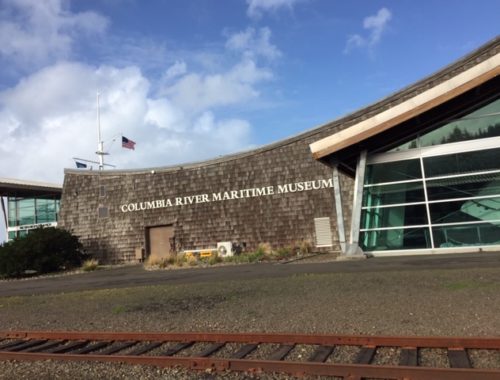I am a planner. If you’ve been reading this blog or know me personally, you already know this. When it comes to adventures, I research for hours. I get almost as much pleasure out of the planning of travel and adventures as I do the travel and adventure itself. That said, every once in a while, I find a little roadside adventure that was never on my radar. Such is the case with Old Shasta in the small town of Shasta, California.
On a quick trip to Redding, California, I visited the Shasta Dam and Whiskey Town Lake. As it happened, along the way I drove by old and no longer inhabited buildings. Curious, I pulled off to investigate. And, it turns out, I inadvertently discovered Shasta Ghost Town, a very small state park. (How cool is that? You know I love state parks). Locals, as I understand it, refer to it as Old Shasta.
Old Shasta: A Brief History
Old Shasta began life as an old gold mining town. It was the center of commerce in the area. A man named Pierson B. Reading was the first to find gold in the area in 1848 and as gold hunters flocked to the area, it became known as Reading Springs. By 1849 several hundred miners were camping on the hillside as they looked to strike it rich. In 1850, the town was renamed Shasta. And within two years more than $2.5 million of gold had passed through the town.
In December 1852, the first of two fires only six months apart destroyed the town twice, each time destroying all 70 businesses on Main Street. As a result, the town resurrected a third time but, having learned their lesson, this time used bricks for the walls and iron for the shutters.
Alas, it didn’t take long before the gold dried up and, by the late 1860s, Shasta saw a decline. Then when the Pacific Railroad put its terminal in Redding rather than Shasta, merchants moved way. In 1888, the county seat was moved from Shasta to Redding and the buildings of brick went into a state of disrepair.
But in the 1920s several individuals and historical societies deciding the save the “boom to bust” town and buildings. So land was purchased by an individual; additional land was purchased with California State Parks got involved. In 1950, the Courthouse Museum opened.
Old Shasta: What You See Today
I visited on a Wednesday. Sadly, the downside of an impulse stop, without the benefit or research and planning, is that the Courthouse Museum was closed as it’s only opened Thursdays thru Sundays. So the wealth of information and artifacts, aside from the signage in front of the brick buildings, I missed out on.
Still, the easy, free roadside stop took less than an hour and was fun. And I still learned a bit about a place I never even knew existed before that moment.
Here is what I saw.
Old Shasta: the Photos





Be Open
So what lesson can be learned by my little roadside adventure? It’s important to be open to taking time to make unexpected, unplanned stops in your travels. Because you just never know what you’ll discover.
What fun things have you unexpectedly found on your travels? Would love to hear about them.
Links to Other Relevant Posts:
To see products recently purchased by readers or to browse and shop at Amazon, follow any of these links. Huge thanks for your support.







Loved your article. I also have had some wonderful surprises. In Colorado, I found an active fire department using a former mining tunnel. It was cool, with low humidity and no building maintenance
Hi Bob. That sounds really cool. How unique!
Long time, no updates. You are the second blogger who dropped off without any warning.
I have followed you from the very first. I am an introvert and that’s why have never commented.
I wanted to reach out and thank you for hours of pleasant read.
Hi Ani, Thank you for the comment. It has not been my intent to drop off without warning. When I took a job at one of my RV locations, I had no idea I’d stay for so long. Not traveling as much plus the loss of free hours to write, my post frequency has definitely gone down. Before then, I spent about 20 hours each week on the website in order to produce weekly posts. But take heart, this blog is not dead. I have upcoming posts planned and scheduled. I do hope you’ll stick around.